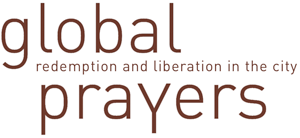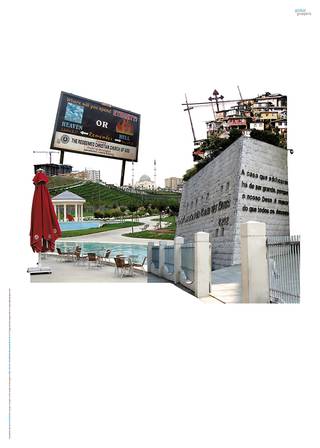The research and cultural project global prayers • redemption and liberation in the city examines new urban religious communities and their impact on urban space in a systematic and comparative way. The project’s overarching question links two related topic areas: first, the global aspects of the return of the religious to the cities, which has emerged across different religions, world regions and types of cities to become a central feature of urban societies, and second, local aspects and practices of various religious communities as they have been shaped by their respective history or urban context. The element tying the global prayers project’s various strands together is the question of how urban space is produced and transformed by the activities of religious communities, with the term 'urban space' here including both an everyday (material, social, political) and a symbolic and imaginary dimension in the sense of Henri Lefebvre.
One important area of inquiry is the relationship between the political and the religious within these new urban religious communities. In particular, the project analyzes the ways in which these religious groups and organizations are enmeshed with state structures and organs. The relationship seems to be determined variously by domination, cooperation, and maintaining distance: in some cases, religious actors replace political ones as regulatory bodies in urban neighborhoods, in others, religious and political forms of organization overlap. A comparison of the different ways in which the relationship between the state and the religious movements manifests itself in the project cities is a central part of the case studies.
A second area of inquiry is the relationship of religious organizations with their social base. The case studies examine which agendas and technologies the religious communities use to govern their members, and which "technologies of the self", in the Foucaultian sense, their members in turn employ to integrate the respective religious programs into their everyday lives. Further, the studies examine the relationship between the religious practices and rituals of these urban religious communities and their secular political and/or social involvement. This includes their (in some cases global) missionary agenda as well as their role as economic enterprises and/or providers of welfare services.
A further topic is the relationship between the transnational and the local dimensions of religious communities. This area of investigation focuses predominantly on modes of expansion and localization and the creation of nodes and networks as well as on the transnational flow of text, images, people and money.
The following are a number of specific questions within these topic areas that are of high relevance for a social discourse beyond the realm of academia or the arts: What are the reasons for the booming of new urban religious movements, not just in poor neighborhoods, but among upwardly-aspiring middle-class groups as well? Is this a global reaction to crisis, material hardship and marginalization? What is the role of cultural, social, and political fragmentation processes in urban everyday life? Do these urban religious communities satisfy a need for spiritual experience, community, or social security, or for a possibility of advancement or social emancipation that other institutions and social forces do not (or longer) fulfill? And looking beyond the social and political dimensions of these urban religious communities: how far do their promises of religious meaning and redemption and the sensuality and spirituality of their practices go towards explaining their booming popularity? What is the impact of these respective communities and movements on urban societies? Do they, for example, pursue identity politics that tends to further socio-spatial segregation processes and conflict? Or do they have the power, with the spiritual and ethical guidance they offer their adherents, to foster social peace and emancipatory processes?
The research, case studies and interventions coming out of this project combine methods and modes of production employed in science, art, film, sound arts, literature, and journalism. The knowledge thus generated finds expression not just in text form, but also in the form of image- and sound-based works that will be presented at an art exhibition, public presentations, and global prayers theme days.
Global Prayers - Information leaflet on the modes and areas of the project´s research.


